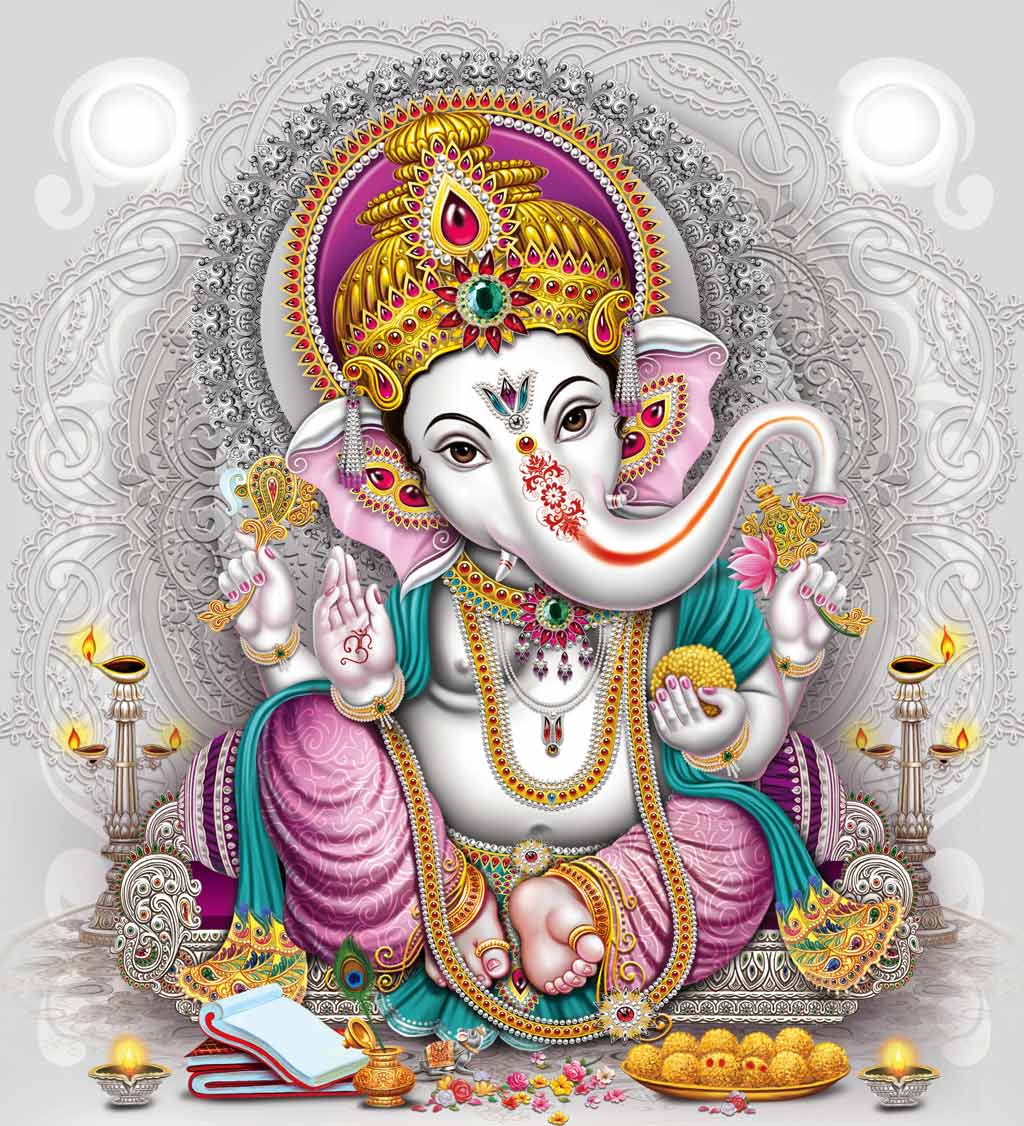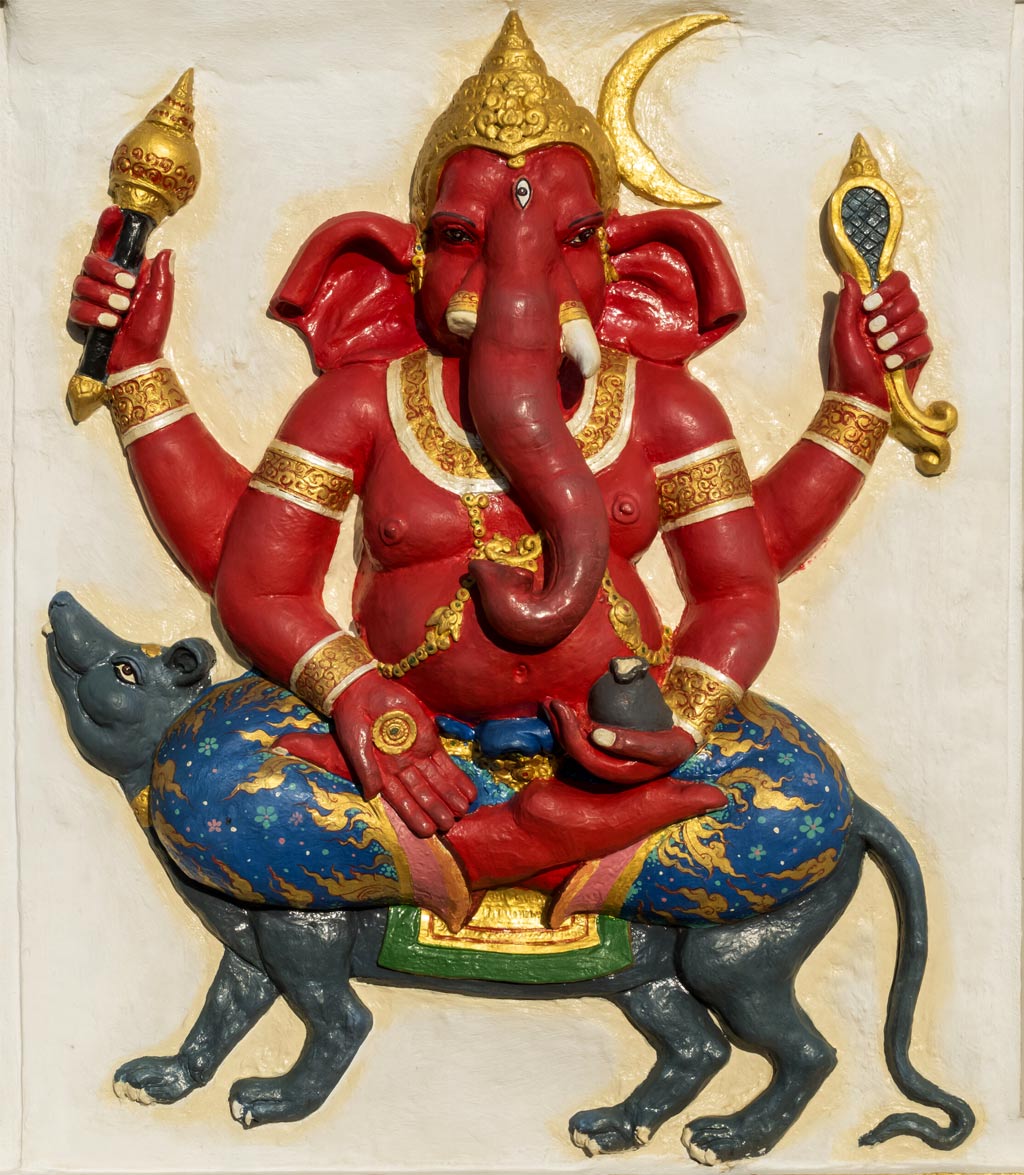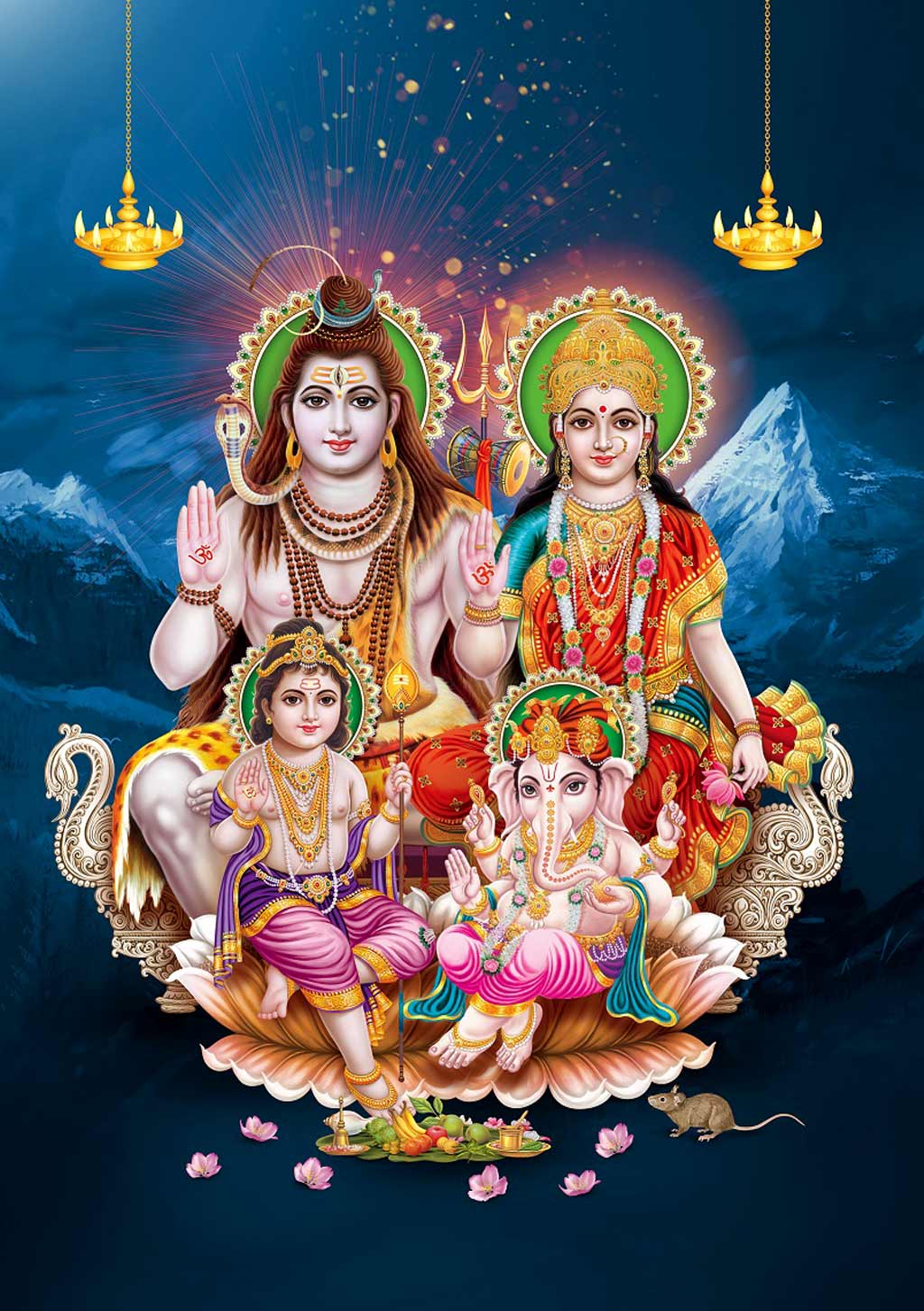Lord Ganesha! The cutest hindu deity? The world’s most beloved Indian God?
This jolly elephant headed God is certainly one of the most revered and worshipped Hindu deities both in India and around the world.
Where did lord Ganesha come from? What are the mantras of Ganapati? And how is Ganesh worshipped?
The name Ganesha is rooted root in the Sanskrit words ‘Gana’ and ‘Isha’, meaning group or system and lord or master respectively.
So the funky half elephant half man is lord of the ganas. What does it mean?
Who is Lord Ganesha?
Well, the word ganas has a literal meaning and a more contextual meaning. Ganesha is the son of lord Shiva. Shiva’s principle disciples were the ganas, semi divine beings (sometimes equated with the Saptarishi who wrote the Indian palm leaf prophecies, among many other contributions to the world.)
So in one sense Ganesha’s primary name indicates him as the chief among the disciples of his own dear father. In a literal sense, gana means grouping or an organised system of things. The 5 elements, the 36 tattvas, the atoms that make up the physicality of the universe, the universes of the multiverse.
In short everything is a grouping of smaller things. And Lord Ganapathi rules over them all.
In other words, Ganesha is the supreme organizing principle that governs the relationship and harmony between all things in existence. Quite a responsibility! No wonder he’s become a fan favourite!

Where Did Lord Ganesha Come From?
The well known origin story of our beloved elephant headed friend reveals that his most endearing and distinguishing feature was not always so. His head was actually the result of losing a fight with his own father!
As is common in the stories of deities and mythical figures, the story of the birth of Ganesha varies depending on where it is found.
However a wisely known version says that Shiva was once away meditating for an extended period of time. While he was away Parvathi took some turmeric paste (sometimes other ritual offerings are mentioned) and fashioned it into a boy. She breathed life into the figure and thus her son came to life. The child of Parvathi grew strong and loved and protected his mother fiercely, almost jealousy.
One day while she was bathing, the young boy was guarding the house. Shiva returned from his retreat and wanted to see his wife parvathi. However when he arrived he found a small boy blocking the way.

Not knowing each other’s true identity, they got into a fight. The son of Parvathi fought bravely, but ultimately was no match for lord Shiva, who decapitated the boy.
Hearing the fighting Parvathi came running, but she was too late. Devastated, she informed Shiva of his grave mistake and ordered that he bring the boy back to life. He agreed and ordered the Ganas, his close disciples, to bring him the head of the first beast they encountered.
They encountered a wise elephant who gladly offered his head in service to lord Shiva and Goddess Parvathi. Upon returning with the head of the elephant the Ganas offered it to shiva who immediately secured the head on the boy’s body.
Bringing him back to life, Shiva recognised him as his own son, and named him Ganesha, or Ganapathi.
Viedo credit to: SeeUinHistoryMythology
The Symbolism of Ganesha
With any deity there are always layers of significance that reveal themselves gradually and experientially to dedicated devotees. These layers are revealed through progressively deepening practice of Puja.
Raised hand – Abhaya Mudra
Symbolises the dispelling of fear and consequently the invitation to relaxation and confidence.
Lord Ganesha’s Axe
Is for cutting the bonds of attachment. It’s interesting to contemplate how many deities carry weapons. The weapons symbolise not their violence, but their efficiency in quickening our journey towards liberation.
The Big Belly
Suggests abundance, joy and the capacity to digest everything that shows up in life with equanimity and calmness.
The Famed Elephant Head
Represents the wisdom of an elephant, widely considered keepers of the wisdom of the earth and the records of history.
Ganesh’s One Tusk
Signifies single pointedness, a mind free of distractions with steady sustained attention.
One Hand Lowered and Open
This gesture usually signifies the bestowing of gifts, boons, blessings, the answering of the prayers of the devotee. It is a gesture of charity..

Deeper Meaning of Lord Ganesha
Lord Ganesha is a deity commonly known as the remover of obstacles. He is evoked at the beginning of many rituals, pujas, spiritual practices and worldly endeavours in order to clear the way and bring success.
The worship of lord Ganesh leads the devotee eventually to a supreme and sublime sense of trust, confidence and optimistic enthusiasm. Essentially these are the qualities that Ganesha brings.
Such pure emanations of the divine consciousness as Ganesha are at once direct manifestations of the essence of creation and, at the same time, specific, very pure aspects of the power of the divine. Ganesha then, while having certain important attributes mentioned above, imparts those attributes only as a consequence of transparency to the truth of this reality.
In other words, worshipping Ganesha lifts a person out of their limited construct of themselves, allowing them to touch into unity consciousness that is the essence of this life. This recognition, however momentary, imbues the devotee with supreme trust, joy, a sense of abundance and completeness.
It is by this supreme and blissful enthusiasm and optimism that all obstacles can be transmuted into lessons and thus fuel for the spiritual journey.
A Story From the Life of Lord Ganesha
One endearing story tells of a contest between Ganesha and his brother Kartikeya (also known as Skanda or lord Murugan). Here we see the playful wit and wisdom of the beloved icon, Ganesh.

A Race Around the World
Once a great sage named Narada came to mount Kailash to visit and honour lord Shiva who was there doing penance. Sage Narada offered a particularly special mango to lord Shiva. The mango was itself a gift from Brahma the creator which was blessed with the power to bestow supreme wisdom and knowledge.
Lord Shiva was honoured by the gift, and immediately puzzled over which of his two sons he should give the mango to.
Shiva and Goddess Parvati decided to test their beloved sons. They decided that the winner of a race encircling the world three times would be the receiver of the mango. Kartikeya being such an impulsive and proactive force immediately jumped onto his peacock and disappeared off on the race.
The Genius of the Young Lord Ganesha
Ganesha was initially in doubt about the race, being considerably larger and heavier than his brother, and having as a vehicle only a mouse. Then a crafty and cunning plan came to him. He turned to his two parents and joyfully made three circumambulations around them in a clockwise direction.
At the end of the third circumambulation he stopped, smiled at Lord Shiva and Goddess Parvati and held out his hand requesting the mango. At first his parents were confused and asked him why he thought he deserved the mango when he had not fulfilled the terms of the challenge.
Young Ganesha looked at his parents and smiled sweetly, claiming that since his mother and father were the whole world to him he had indeed completed the challenge.
Impressed by his wit, Shiva handed the mango over to his son Ganesha, just as Kartikeya arrived back from his three laps of the world.
Initially, Kartikeya was not happy at having been outwitted by his brother. But out of love for his brother Ganesha offered half of the mango to Kartikeya anyway.

About My Palm Leaf
The legends say that thousands of years ago, a group of Indian sages perceived the lives of people living throughout all ages and wrote them onto the Palm Leaves. These manuscripts are stored in temple libraries all over the south of India.
We help you to find your manuscript, have a reading online and receive the guidance of the sages. This guidance can assist you to overcome obstacles in your life, and understand your life from a higher perspective.


